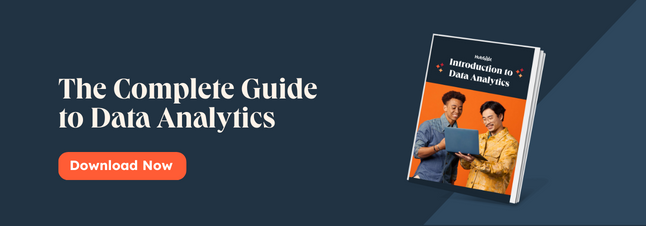While commonly used for scientific research, a data repository can also be used to manage business data. Let’s take a look at some challenges and benefits below.
What are the challenges of a data repository?
The challenges of a data repository all revolve around management. For example, data repositories can slow down enterprise systems as they grow so it’s important you have a software or mechanism in place to scale your repository. You also need to ensure your repository is backed up and secure. That’s because a system crash or attack could compromise all your data since it’s stored in one place instead of distributed across multiple locations.
These challenges can be addressed by a solid data management strategy that addresses data quality, privacy, and other data trends.
To create your own, check out our guide Everything You Need to Know About Data Management.
What are the benefits of a data repository?
Having data from multiple sources in one place makes it easier to manage, analyze, and report on. A data repository makes it faster and easier to analyze and report data because it’s stored in one place and compartmentalized. It also improves the quality of data since it’s aggregated and preserved. Without a single repository, you’ll likely deal with duplicate data, missing data, and other issues that affect the quality of your analysis.
Now that we understand both the challenges and benefits of a data repository, let’s look at some examples.
Data Repository Examples
Data repository is a general term. There are several more specific terms or subtypes. Let’s take a look at some of these examples below.
Data Warehouse
A data warehouse is a centralized repository that stores large volumes of data from multiple sources in order to more efficiently organize, analyze, and report on it. Unlike a data mart and lake, it covers multiple subjects and is already filtered, cleaned, and defined for a specific use.
We’ll take a closer look at the difference between a data repository and warehouse below (jump link).

Data Mart
A data mart is a subset of a data warehouse designed to deliver specific data to a specific user for a specific application. This type of repository is focused on a single subject. For example, a human resources database may contain data marts for employees, benefits, and payroll, respectively.

Data Lake
A data lake stores raw data from different sources. “Raw” data means it has not been filtered or structured and it does not have a predetermined use case. This makes it easier and less expensive to edit, but also requires more work selecting, organizing, and cleaning it to use it.

A data warehouse is best suited for providing a broad, historical view of large data sets integrated from multiple sources to drive strategic decisions that affect the entire enterprise. Other types of data repositories are better suited for handling unstructured or complex data formats, analyzing data for different subsets of business operations, and other use cases.
For more details on what a data warehouse is and how it works, check out this video:
Data Repository Software
Choosing a data repository software comes down to a few key factors, including sustainability, usability, and flexibility. Here are some questions to ask when evaluating different software:
- Is the repository supported by a company or community?
- What does the user interface look like?
- Is the documentation clear and comprehensive?
- What data formats does it support?
Answering these and other questions will help you pick the software that best meets your needs. Let’s take a look at some popular data repository software options below.
1. Ataccama
Best for: Multinational corporations and mid-sized businesses

Ataccama is a data repository software that can act as a single source of truth for your company’s data and dynamically create different views of that data for different teams and departments. It provides AI and smart automated processes to simplify data management and save you time.
2. Amazon Redshift
Best for: Organizations of all sizes

Amazon Redshift is the most widely used cloud data warehouse and one of the best data management platforms. Using Structured Query Language (SQL), it analyzes structured and semi-structured data across data warehouses, operational databases, data lakes, and third-party data sets. Since it’s cloud warehousing, you can quickly run and scale analytics on all your data without having to manage any infrastructure.
3. Oracle Autonomous Database
Best for: Enterprise companies
.webp?width=650&height=305&name=draft%20-%20data%20repository%20(1).webp)
Oracle Autonomous Database is an all-in-one cloud database solution for data marts, data lakes, operational reporting, and batch data processing. It uses machine learning to automate all routine database tasks, including provisioning, tuning, scaling, and failure detection, to ensure higher performance, reliability, security, and operational efficiency.
4. Integrate.io
Best for: Ecommerce companies

Integrate.io is a data warehouse integration platform designed for ecommerce companies. With Integrate.io, you can get inventory, fulfillment, and carrier performance reporting in real time to discover operational inefficiencies, drive decision making, and grow your business.
Why You Need a Data Repository
A data repository — which can generally refer to any destination designated for data storage or more specifically refer to a data warehouse or data lake — can help improve your data reporting and analysis. In turn, this can improve your decision making and help grow your business.











